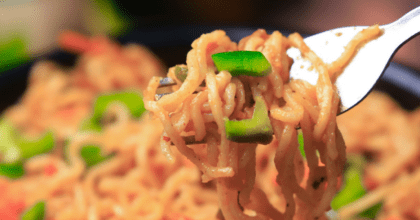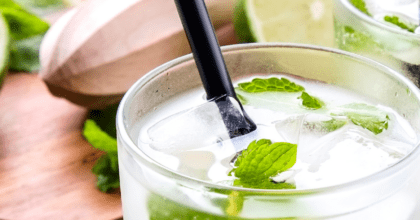Drinking at home is the toast of the town for 18-24 year olds – half now celebrate special occasions at home
“With squeezed incomes, higher food prices and less discretionary spend available – it is understandable why consumers have shifted towards drinking at home in the recession. But while younger drinkers – who traditionally drink out much more than their older counterparts – were forced to drink more at home in times of austerity, it appears they have decided that home is the place to be. Indeed, according to latest research from Mintel, over half (55%) of 18-24 year-olds drink at home for a special occasion compared to just four in ten (41%) of overall UK in-home drinkers – and a fifth (21%) of 18-24s claim to be entertaining more at home than ever before.
Today, it appears that younger drinkers no longer equate home to cheap and cheerful drinking – and it seems pricing structures are a big influence on how younger people purchase wine in particular. Mintel found that the average amount wine drinkers spent on a bottle of wine for drinking at home was £6.01. However, for 18-24 year-olds – who drink less wine than any other age group – this rose to £8.35. While this partly reflects an indulgent attitude to in-home drinking, it is also revealing about their lack of knowledge about wine: for example, over a fifth (22%) of 18-34s find that the large choice of wine in supermarkets makes buying too complicated compared to just one in ten (11%) of over-34s.
Furthermore, half (50%) of 18-34 year-olds admit that”without discounting I would probably buy less wine than I do” compared to two in five (41%) of wine drinkers aged over 35. In contrast, over-35s spend an average of £5.38 per wine bottle but drink an average of 3.4 bottles per month compared to just 2.4 for 18-24s – spending less, but drinking more often. Overall, some 55% of those who purchase wine for in-home consumption say they usually buy depending on what has the best discount, illustrating that when it comes to wine, the UK is a nation of discount junkies.
“Younger drinkers are changing. While pre-recession it was all about drinking out of home and the austerity of the recession forced them back indoors to make savings – post recession younger drinkers are taking the going out attitude into the home. This means they are hosting celebrations and events in home – and splashing out on higher end alcohol. Attitudes have shifted as they have been having more big nights at home, initially because they were forced to due to economic pressures – but now they have found that it has its advantages over going out. It appears, that for younger consumers, staying in really is the new going out. ”
“Younger drinkers also use discounting more as an aid to wine buying – a way to filter out the noise. With a lack of knowledge and experience of wine, it appears that 18-24 year-olds use price as a barometer of quality – an issue assisted by the discounting culture in supermarkets – acting as further influence. The discounting strategy of major multiples may be controversial but it is a key purchase driver in such a fragmented market place. That older drinkers spend less on wine reflects in part their greater knowledge of the sector – meaning they can rely on quality cues other than price when making a purchasing decision – but that they also drink wine more habitually and less for special occasions meaning a need to keep to a tighter budget. “Jonny continues.
Estimated to reach £13.6 billion in 2011, the in-home drinking market has grown by 17% since 2006, although in real value terms, the market has seen a fall of 2.2%. Between 2006 and 2010 penetration of in-home drinking remained static despite overall drinking being in decline, as people drank more at home where drinking was much cheaper. However, between 2009 and 2010, this dynamic has changed, with in-home drinking declining from 75.4% in 2009 to 71.9% in 2010. The fact that in-home drinking is still cheaper means that it still has not seen the sort of decrease in penetration evident in the on-trade where penetration fell a staggering 6.4 percentage points from 62% to 56% year-on-year to 2010.
Almost eight in ten (79%) consumers have drunk alcohol in the home in the last six months, representing a sizeable and mature market. Price remains the over-riding reason for consumers to drink at home, with more than three in four (76%) consumers agreeing that ‘it is cheaper to drink at home’. However, more than a quarter (35%) of consumers cite the fact that it is less hassle than travelling to a bar, that they dislike crowded bars (30%) and that it is more intimate to drink at home (27%) as important drivers. Mintel’s research also reveals 64% of UK alcohol drinkers opt for quality over quantity and 78% think they can taste the difference when drinking premium brands.
While half (45%) of consumers disagree that they drink more at home than they do when they are out, around the same number (43%) disagree that they drink stronger drinks at home then they would when out. Some 28% say they tend to mix their drink less when at home. And when it comes to what we are drinking at home, white wine tops the list, with 44% of Brits saying they have drunk this type in the last six months. Red wine comes a close second with 40% of Brits, followed by lager (39%), Rose (29%) and white spirits (28%). However, while volume sales of Rose wine (+7%) and White wine (+2%) have increased year on year – sales of Red wine have declined 3% – from £522 million to £506 million following a trend towards lighter and more refreshing wines.
But it appears there is a gender divide when it comes to what we are drinking – with the top five drinks for men comprising: Lager (51%), Red Wine (42%), White Wine (42%), Cider (32%) and Bitter/Ale (30%). The top five drinks for women are White Wine (47%), Red Wine (39%), Rose Wine (32%), White Spirits (28%) and Lager (26%).
-
Mintel StoreGet smart fast with our exclusive market research reports, delivering the latest data, innovation, trends and strategic recommendations....View reports
-
Mintel LeapMintel Leap is a revolutionary new AI-powered platform that will transform your research process....Book a demo







































